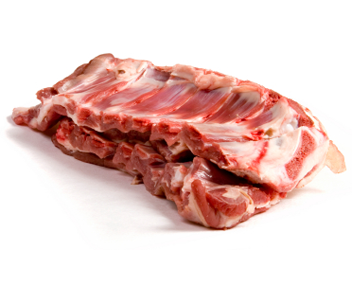According to the results of 2022, pork imports to Russia will grow by 48.8% to 16,800 tons in carcass weight. Such a forecast is contained in the monitoring of the situation in the meat markets of the Russian Union of Poultry Breeders (Rosptitsesoyuz), which was reviewed by Vedomosti. It says that this is the only type of meat, the supply of which will increase. For example, according to the results of the year, chicken imports will decrease by 27.3% to 177,800 tons, beef - by 22.9% to 165,100 tons. A request to the Russian Poultry Union remained unanswered.
Information about the growth of pork imports is confirmed by the National Union of Pig Breeders (NSS) and the National Meat Association (NMA). The NSS representative predicts an increase in supplies by 54% to 18,000 tons. At the same time, since 2012, the volume of pork imports has been continuously decreasing and has fallen from 1.2 million tons to 12,000 tons. within the quota of 100,000 tons, explains NSS General Director Yuri Kovalev. According to him, since 2020, the duty has been 25% of the cost of products, and against the backdrop of achieving self-sufficiency in Russia, the import of such meat has practically vanished.
At the end of 2021 and 2022, the Eurasian Economic Union (EAEU) provided the opportunity for duty-free import of pork and beef. This measure was initiated by the Russian Ministry of Agriculture amid fears of rising wholesale prices for meat due to the spread of African swine fever (ASF). Kovalev confirms that due to ASF, production decreased, but already in the fourth quarter, the pace of production recovered. Because of this, the average annual wholesale prices for live pigs at the end of the year will even decrease by 5% to 116-118 rubles. per 1 kg (including VAT). According to the NSS, pork output in the country for 11 months of 2022 increased by 7.4% to 4.7 million tons.
The growth in pork production has led to the fact that imports have not become profitable, and even the quota of 100,000 tons has not been completely chosen by market participants, says Kovalev. Imports, he said, almost completely stopped in the third quarter. Kovalev believes that it will not grow in 2023 either. According to him, the key factor is the continued growth of domestic production and the decline in exports, which lead to additional production in the domestic market. According to the results of 2022, external supplies of pork will decrease by 17.5% to 154,000 tons, Rosptitsesoyuz predicts.
As for beef, in the first half of the year the pace of imports was low due to logistical difficulties, the withdrawal of carrier companies and the high volatility of the ruble, says Sergey Yushin, head of the NMA. According to him, 35-40% of the annual output of this type of meat is produced in the fourth quarter, so wholesale prices are actively decreasing. Yushin points out that importers are already selling some cuts at a loss. According to the results of the year, Rosptitsesoyuz predicts an increase in beef production by 1% to 1.55 million tons, while in January-November, the output decreased by 7.1% to 1.34 million tons.
The cost of beef is additionally affected by a decrease in consumer demand: some consumers are switching to turkey as an alternative to cattle meat, Yushin adds. As a result, turkey prices remain at the level of last year and even higher, despite a noticeable increase in production. Some consumers are switching to cheaper pork and chicken, wholesale and retail prices for which are already below last year's level, Yushin concludes. According to the price monitoring data of the analytical agency Ad Libitum (with the participation of the NSS, the National Union of Poultry Breeders and the Institute for Agricultural Market Studies), the wholesale cost of turkey fillet in the first ten days of December was 10% higher than the level of the same year and amounted to 320 rubles. per 1 kg, commercial pigs - lower by 1% (107 rubles per kg), broiler carcasses - by 4% to 133 rubles. per kg.
© Inline LLC 2015-2025. Privacy Policy | Terms of Service